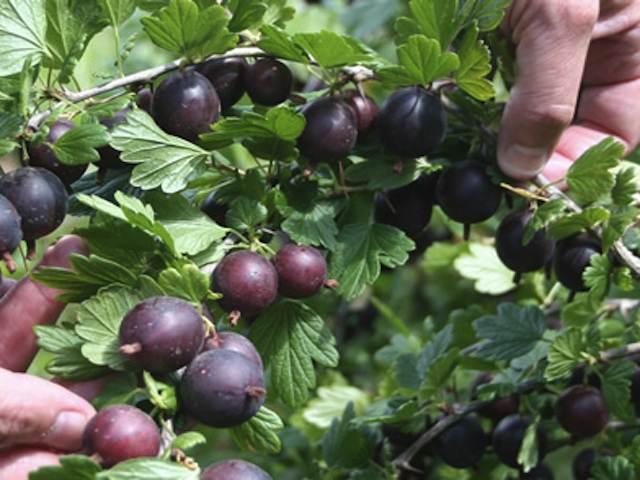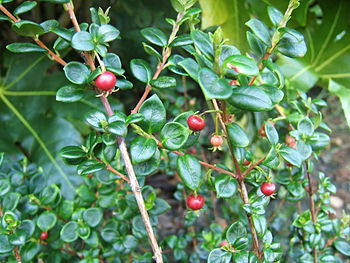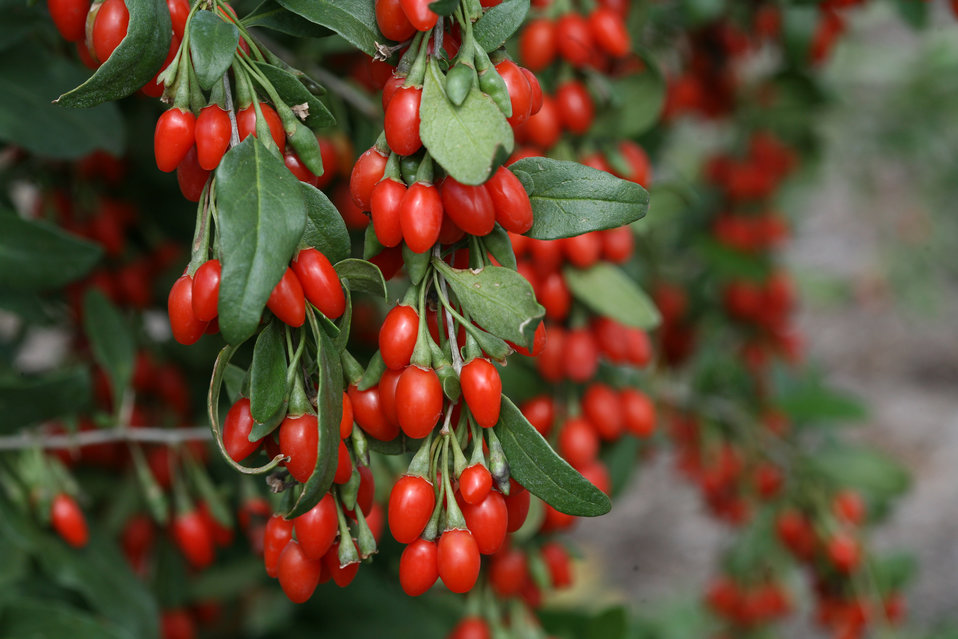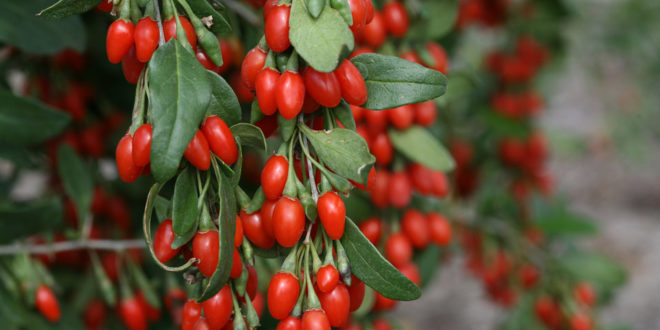Asked to name 5 varieties of berries, you’ll almost certainly come up with the most well known: strawberries, raspberries, blue berries, gooseberries and blackberries. But there are some soft fruits out there that are so ‘berry different’ you’ll be surprised to find that not only do we have them in New Zealand, but you can grow them in your own backyard!
Worcesterberry
 If you enjoy blackcurrants and gooseberries, this is the berry for you. Smaller than a gooseberry and larger than a blackcurrant, the Worcesterberry is no hybrid but, rather, a distinct species in its own right: ribes divericatum. The fruit, which forms in late-spring on the previous season’s new wood, begins life as a small green berry which ripens to a deep purple as it swells and matures. Perfectly sweet when ripe, the berries retain a delicate level of acidity. The best features of this prolific fruiter (expect to pick kilos from a single bush) is that it is an outrageously vigorous grower which happily withstands (in fact frequently needs) a good hack back. But don’t let that put you off as this hardy bush makes up for its growth rate by being satisfied with relatively poor soils. The one drawback to the Worcesterberry is its vicious thorns. The way around this annoying feature is to prune the bush into an open vase shape for ease of picking. Cover the bush as the berries ripen or the birds will beat you to them.
If you enjoy blackcurrants and gooseberries, this is the berry for you. Smaller than a gooseberry and larger than a blackcurrant, the Worcesterberry is no hybrid but, rather, a distinct species in its own right: ribes divericatum. The fruit, which forms in late-spring on the previous season’s new wood, begins life as a small green berry which ripens to a deep purple as it swells and matures. Perfectly sweet when ripe, the berries retain a delicate level of acidity. The best features of this prolific fruiter (expect to pick kilos from a single bush) is that it is an outrageously vigorous grower which happily withstands (in fact frequently needs) a good hack back. But don’t let that put you off as this hardy bush makes up for its growth rate by being satisfied with relatively poor soils. The one drawback to the Worcesterberry is its vicious thorns. The way around this annoying feature is to prune the bush into an open vase shape for ease of picking. Cover the bush as the berries ripen or the birds will beat you to them.
Ugni berry
 Few berries are available in early winter but the ugni (sometimes know in New Zealand as a cranberry – which it is not) is one of them. Myrtus ugni, also known as Chilean guava, flowers in late summer but it is its unusual, waxy fruit which carries the perfume. So sweetly scented is this berry that you are more likely to catch its distinctive scent before you see its small, pink berries. The size of large, fresh currants, they are born on evergreen branches covered in small leaves not unlike those of a cotoneaster. The bushes have a springy, close habit which makes them ideal for pruning into low hedges. As such, they can provide both shelter and food – a feature which is often sought after by those with compact gardens. Ugni are reliably hardy to -10°C and tolerate poor soils. Provided it receives plenty of sun and well drained soils, the ugni requires virtually no maintenance. While it propagates easily from small rooted slips taken from around the base of the stem, ugni is unhappy if moved, often turning up its toes if relocated. The berries can be used in baking or fresh muesli or enjoyed straight from the bush (ignore the tiny sepals on the end of the berry – once you accept them, you’ll forget they are there).
Few berries are available in early winter but the ugni (sometimes know in New Zealand as a cranberry – which it is not) is one of them. Myrtus ugni, also known as Chilean guava, flowers in late summer but it is its unusual, waxy fruit which carries the perfume. So sweetly scented is this berry that you are more likely to catch its distinctive scent before you see its small, pink berries. The size of large, fresh currants, they are born on evergreen branches covered in small leaves not unlike those of a cotoneaster. The bushes have a springy, close habit which makes them ideal for pruning into low hedges. As such, they can provide both shelter and food – a feature which is often sought after by those with compact gardens. Ugni are reliably hardy to -10°C and tolerate poor soils. Provided it receives plenty of sun and well drained soils, the ugni requires virtually no maintenance. While it propagates easily from small rooted slips taken from around the base of the stem, ugni is unhappy if moved, often turning up its toes if relocated. The berries can be used in baking or fresh muesli or enjoyed straight from the bush (ignore the tiny sepals on the end of the berry – once you accept them, you’ll forget they are there).
Goji berry
 A native of China, the goji berry (also called wofberry, which is its non-commercial title) is best known to us in New Zealand as a dried fruit. Although it is purported to have health-giving properties, one thing we can be sure of is its low calorie count. Given that is very sweet in its dried form, and can be easily desiccated in a home dehydrator, it is ideal for use in breakfast cereals and baking. The goji bush, which grows to a height of 1-3 metres, is slow to produce fruit when grown from seed (expect to wait 3-4 years) so is best purchased as an already established plant from nurseries. It is deciduous, unfussy about soil type (although a neutral to slightly alkaline soil is preferred) and does best when planted against a sheltered, sunny wall.
A native of China, the goji berry (also called wofberry, which is its non-commercial title) is best known to us in New Zealand as a dried fruit. Although it is purported to have health-giving properties, one thing we can be sure of is its low calorie count. Given that is very sweet in its dried form, and can be easily desiccated in a home dehydrator, it is ideal for use in breakfast cereals and baking. The goji bush, which grows to a height of 1-3 metres, is slow to produce fruit when grown from seed (expect to wait 3-4 years) so is best purchased as an already established plant from nurseries. It is deciduous, unfussy about soil type (although a neutral to slightly alkaline soil is preferred) and does best when planted against a sheltered, sunny wall.











Join the Discussion
Type out your comment here:
You must be logged in to post a comment.